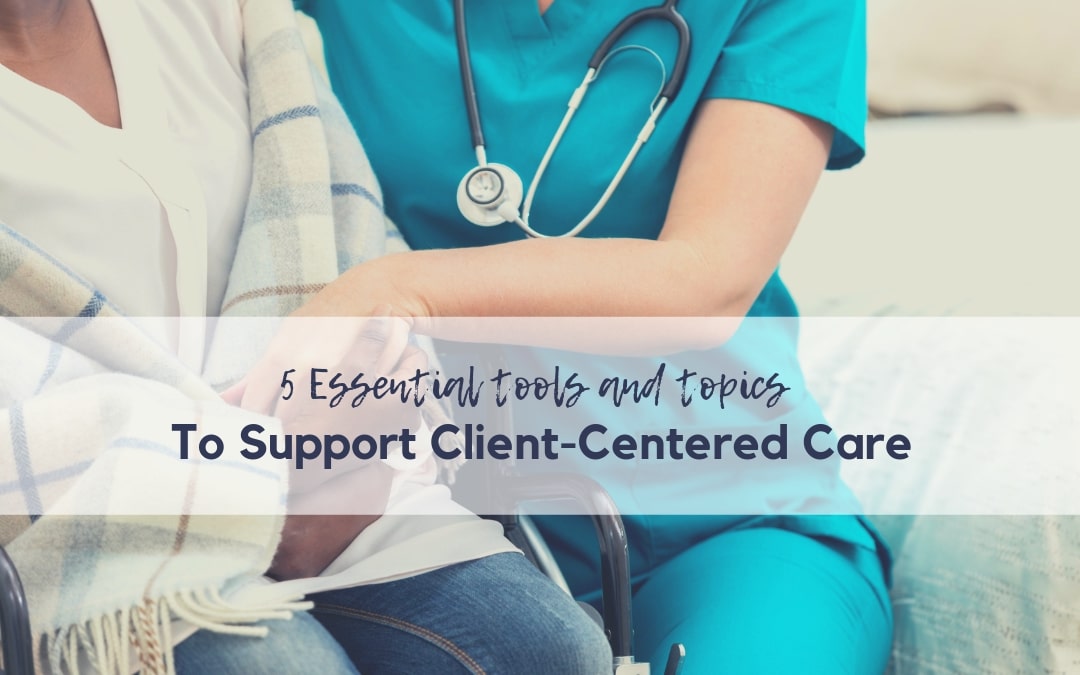Do Your Caregivers Provide Client-Centered Care?
Do Your Caregivers Provide Client-Centered Care?
October is “Patient-Centered Care Awareness Month.” This international awareness-building campaign commemorates the progress that has been made toward making patient-centered care a reality!
True client-centered care means:
- Healthcare professionals understand that clients are consumers who have choices and need clear, accurate information.
- The client has a voice that overrides the care team’s “schedule.”
- Care isn’t just delivered by healthcare professionals. There must be opportunities for loved ones to be involved.
- A healing physical environment, food, spirituality, and emotional support are just as important as pills, monitors, and machines.
5 Ways to improve your delivery of client-centered care
1. Start by assigning the intheknow course, “Client-Centered Care.”

- If you subscribe to intheknow’s online learning portal, you already have access to this module. Simply assign the course to your team and track their progress.
- Or, order the PDF course online for an instant download you can use as part of your Blended Learning Plan.
2. Promote customer service skills.

Just like Client-Centered Care, Customer Service in Health Care is also available in both e-learning and classic PDF formats. This course contains essential information on healthcare customer service, including the importance of first impressions, and the benefits of striving for excellence. It includes tips on identifying and meeting the needs of both internal and external customers and dealing with complaints.
If you already subscribe to intheknow‘s online learning portal, you’re all set!
Not a subscriber? Learn more about e-learning with intheknow by requesting a demo today!
3. Measure Client Satisfaction.

Download the new guide: How to Measure Client Satisfaction in Your Caregivers. In it, you’ll find a ready-to-use client satisfaction survey tool you can copy and distribute to your clients that will measure just how satisfied they are with your Care Team.
4. Teach Caregivers how to communicate with family members.

Our course on Dealing with Family Members is the answer! This course discusses how a family’s history impacts how they deal with a loved one’s illness. Learners will review the reasons why a client’s family members may be stressed, how to deal with overwhelmed, absent, argumentative or grieving family members, and how children are affected when a loved one is ill. This lesson also outlines how HIPAA rules affect communication with family members.
Subscribers to intheknow‘s online learning portal are all set!
Ready to find out how affordable online learning can be? Request a quote today!
5. Prevent re-admissions to the hospital.

- TOOL #1: The Risk Factor Cheat Sheet. Knowing the risk factors associated with higher readmission rates will keep vulnerable clients on your Caregiver’s radar.
- TOOL #2: Medication Management Worksheet. Medication mistakes make readmission five times more likely. This tool helps Caregivers, clients, and family members manage medications safely.
- TOOL #3: Follow-up Appointment Tracker. Patients who go to follow-up appointments within 14 days of discharge are 20% less likely to be readmitted. Use this tool to track important appointments.
- TOOL #4: The “Know-When-to-Go” Chart. Knowing the difference between symptoms that require a call to the doctor vs. a visit to the ER can prevent unnecessary readmissions.
- TOOL #5: Year-Long Lesson Plan for Preventing Readmissions. A specially trained team of Caregivers can provide exceptional client care AND prevent unnecessary readmissions. Use this lesson plan to build your caregivers’ continuing education curriculum for the new year.








